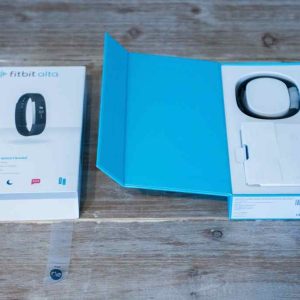Understanding Fitbit Flex’s Sensitive Sleep Mode: A Deep Dive for Better Rest Tracking
Fitbit Flex is a popular fitness tracker known for its sleek design and sleep tracking capabilities. One feature that often sparks curiosity is the “Sensitive Sleep Mode.” If you’ve ever wondered how this mode works, whether it’s right for you, and how it impacts your sleep data, this article is for you.
What is Sensitive Sleep Mode?
Sensitive Sleep Mode is a setting on older Fitbit devices, like the Flex, that allows the device to record sleep patterns with increased sensitivity. It essentially means the Flex will be more attuned to even the slightest movements during your sleep.

How Does it Differ from Normal Mode?
In the standard “Normal” sleep mode, the Fitbit Flex records significant movements, like tossing and turning, as time spent awake. This is generally suitable for most users. However, in Sensitive Sleep Mode, nearly all movements, including minor ones, are registered as either restless sleep or time spent awake.
Why Use Sensitive Sleep Mode?
Sensitive Sleep Mode can be beneficial for individuals who:
- Wake up feeling tired despite seemingly sufficient sleep: If you consistently feel fatigued even when your sleep data shows adequate hours, this mode may help uncover subtle disruptions in your sleep.
- Experience light sleep or frequent awakenings: Those with restless sleep patterns might find this mode more accurately reflects their sleep experiences.
- Want a more detailed sleep analysis: Sensitive mode provides a more granular look at your sleep, potentially revealing patterns you might not see with the standard setting.
How to Enable Sensitive Sleep Mode
While the steps can vary slightly depending on the specific Fitbit app version, the general process is as follows:
- Open the Fitbit app.
- Navigate to your account settings.
- Select your Fitbit Flex device.
- Look for the “Sleep Sensitivity” setting.
- Choose “Sensitive” mode.
Interpreting Your Sleep Data in Sensitive Mode
With Sensitive Sleep Mode activated, you’ll likely notice an increase in the “restless” or “awake” time recorded in your sleep log. It’s important to understand that this doesn’t necessarily mean you were fully awake during those periods. It could simply indicate minor movements or brief awakenings that you might not have been consciously aware of.
Considerations and Tips
- Individual Variation: Sleep patterns are highly individual. Experiment with both Normal and Sensitive modes to determine which provides the most insightful data for you.
- Data Accuracy: Fitbit devices, including the Flex, use motion-based tracking to estimate sleep. While they offer valuable insights, they might not be as precise as clinical sleep studies.
- Consult with Professionals: If you have concerns about your sleep, it’s always recommended to consult with a healthcare professional for personalized guidance.
In Conclusion
Fitbit Flex’s Sensitive Sleep Mode can be a valuable tool for understanding your sleep patterns with greater detail. By being aware of how it works and how to interpret the data, you can gain valuable insights into your rest and make informed decisions about your sleep habits.
Remember, quality sleep is essential for overall well-being. If you have any persistent sleep issues, don’t hesitate to seek professional advice.



Average Rating